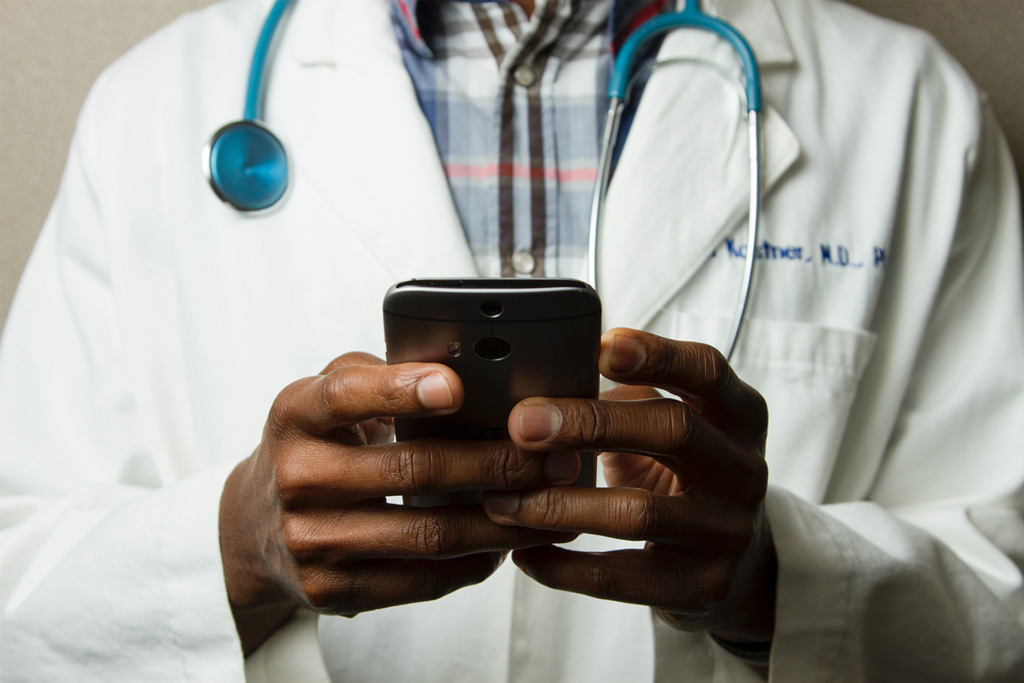Nursing and healthcare professions utilize Telehealth to improve patient care and access

There’s no question that nursing has changed in the last 150 years. Born to fill a void for care delivery in hospitals and wartime (where nurses still continue to provide necessary care today), nurses also now work in dozens of specialties, practice types, and patient settings, often as highly skilled, trained, and specialized healthcare practitioners, and they implement some of the most cutting edge technology out there.
No matter where they work, nurses have been community advocates since the inception of the profession. And in 2023, the nursing profession seeks to fill a growing void for accessibility to healthcare in rural, underserved, and aging populations.
Take three alternative patient settings where nurses may find themselves in growing sectors, each seeking to provide access to care to diverse patient populations: telehealth, home health, and community-based care. This blog post focuses on telehealth specifically and how nursing plays a crucial role in supplementing, augmenting, and improving accessibility to patient care.
How Telehealth Nurses Work
The US Health Resources Services Administration defines telehealth as “the use of electronic information and telecommunications technologies to support long-distance clinical health care, patient and professional health-related education, public health and health administration.” Telehealth has grown as a cost-effective, accessible option for healthcare providers to work with patients remotely in a number of ways.
Telehealth may encompass live, remote care provided synchronously, or remote patient monitoring where a practitioner is able to check in on specific data sent and stored throughout a patient’s day. This data may be manually entered by a patient or even automatically recorded and uploaded through smart devices, like smart glucose and heart monitors.
Telehealth can include primary care or specialist services. It can also be a tool for remote patient monitoring between in-person visits. Or, like in the Acute Hospital Care at Home (AHCaH) model highlighted in a recent blog post, patients requiring acute care are cared for by a team of healthcare professionals who either visit the patient in their home or connect with them via telehealth on a regular basis. Depending on where and at what level a nurse practices, they may be engaged with patients in any of these formats and settings.
Nurses are able to assist in telehealth by asking important intake and follow-up questions, and everything in between within the scope of the nurses’ practice. Importantly, nurses are able to see more patients with greater efficiency.
How is Telehealth Improving Patient Care & Access
The largest overall benefit of telehealth to patients is the growth in opportunity to meet with specialists. Those traditionally unable to access specialists, such as those in rural or remote areas who would have otherwise had to drive long distances to meet with their practitioner, those who are homebound, have mobility issues or do not have access to transportation can now meet with some of the best providers in the country virtually.
According to the Association of American Medical Colleges, while an estimated 20 percent of the U.S. population live in rural communities, only about 11 percent of physicians practice in such areas. Furthermore, rural residents are more likely to suffer from heart disease, lung diseases, and receive cancer diagnoses in later stages. Telehealth helps remote individuals access important care, leading to more favorable outcomes.
Telehealth is also an efficient alternative to get patients in front of healthcare providers and nurses for check-in visits between those where more technological in-person diagnostic tools are required, such as at the beginning of a patient relationship, as a general check-in, and even to do post-op analysis. Telehealth nursing can also focus on working directly with patients for long-term patient wellness, chronic disease self-management and autonomy, education, and overall health.
Nursing at John Carroll University
The John Carroll University bachelor’s degree in nursing helps to-be nurses prepare for the growing models of telehealth practice. The training includes future forward skill development in enhancing patient care and understanding the role of technology and informatics in healthcare.
JCU is a private Jesuit university located in University Heights, Ohio, near Cleveland.
